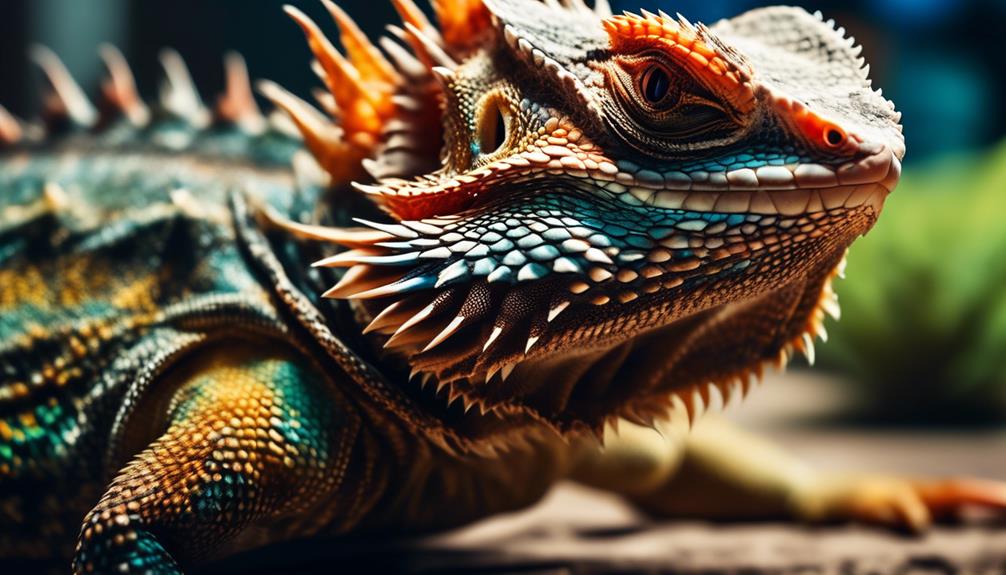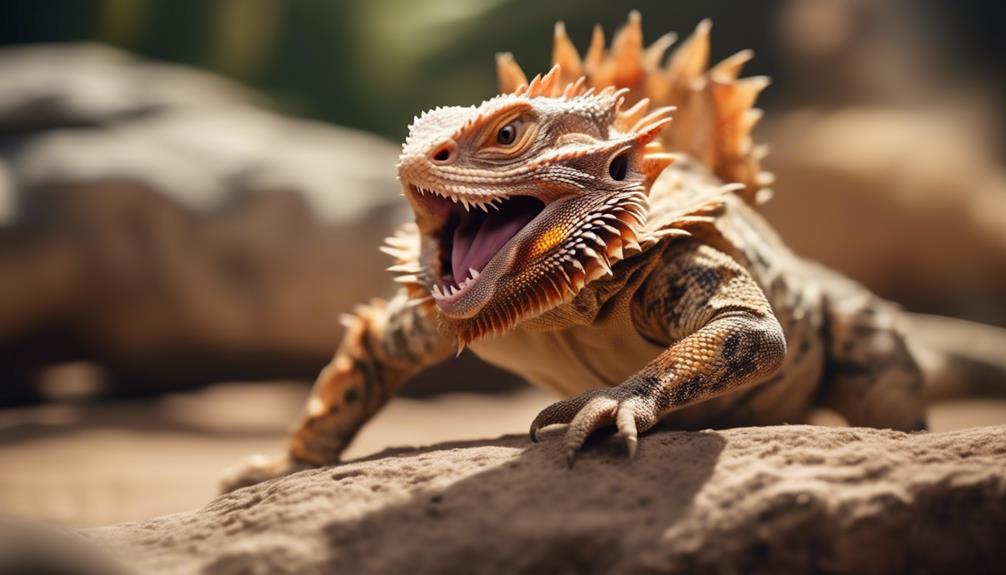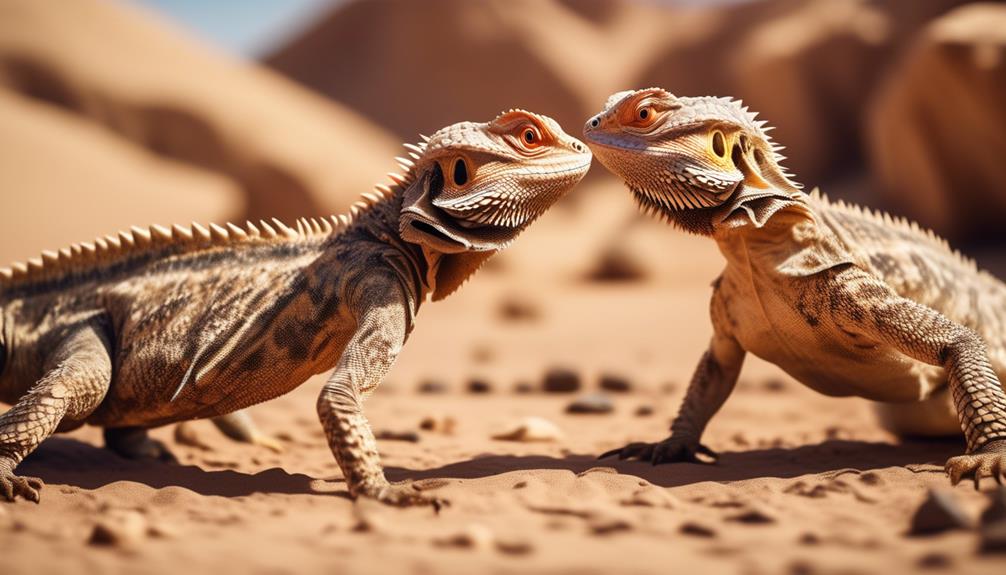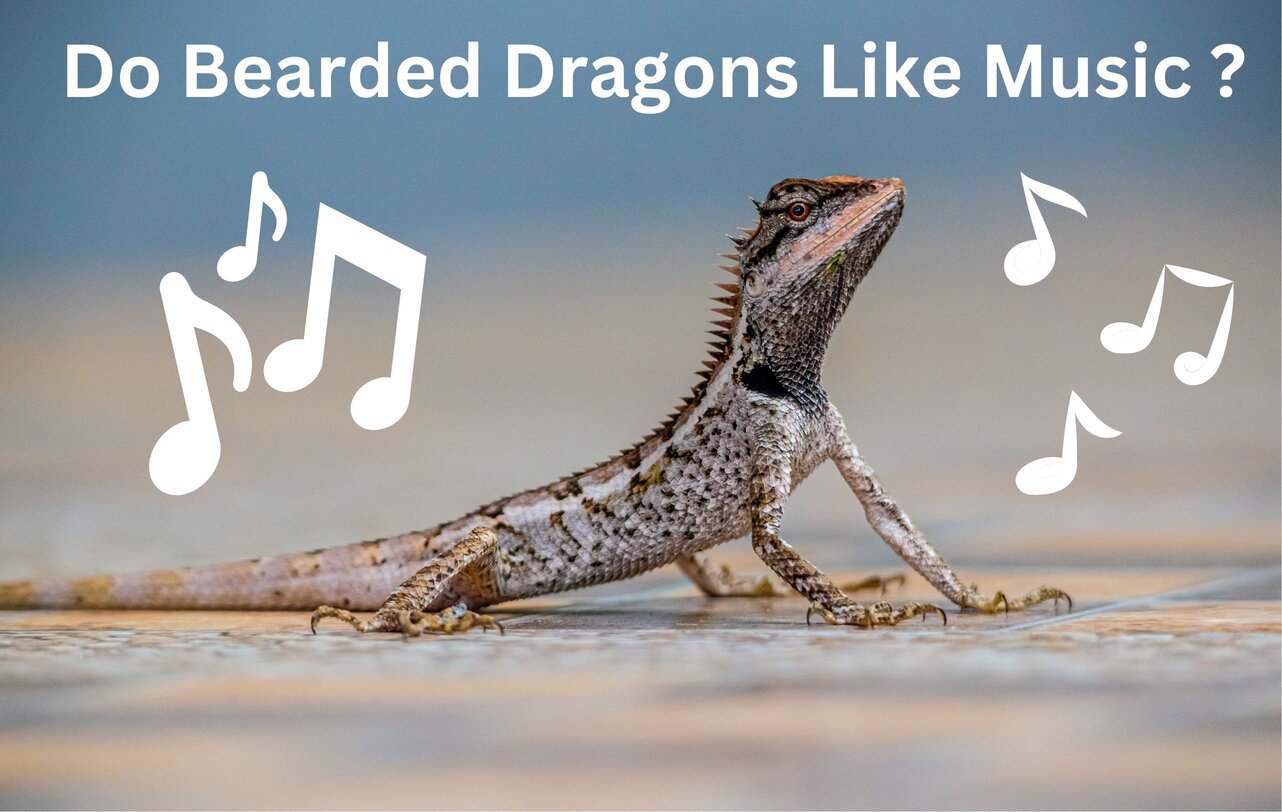Welcome to our exploration of the intriguing world of territorial battles among bearded dragons.
Now, some may argue that these reptiles are just harmless creatures, but let us assure you, there's more than meets the eye.
In this article, we will reveal the hidden dimensions of aggression and dominance displayed by these majestic beings. Brace yourself as we uncover the secrets behind their biting, hissing, bearding, head bobbing, gaping, tail whipping, arm waving, and body puffing.
Prepare to be captivated by the unmasked anger of the bearded dragon and the mysteries it holds.
Key Takeaways
- Biting and hissing are common signs of aggression in bearded dragons.
- Fluffing their beard is a threat sign and can indicate increased aggression.
- Head bobbing is a territorial behavior and can be seen in male bearded dragons.
- Gaping, tail whipping, arm waving, and puffing up their body are other signs of aggression in bearded dragons.
Aggression Signs: Biting and Hissing

Biting and hissing are common aggressive behaviors exhibited by bearded dragons when they feel threatened or provoked. Understanding the underlying causes of aggression is crucial in effectively dealing with these behaviors.
Aggression triggers can include environmental factors such as overcrowding, inadequate habitat, or territorial disputes. It's important to provide a suitable living environment and address any potential stressors.
Effective strategies for handling a biting bearded dragon involve approaching them calmly and confidently, avoiding sudden movements, and using a gentle touch to establish trust. Gradually desensitizing the dragon to handling can also help reduce aggression.
Additionally, providing proper nutrition, maintaining appropriate temperatures, and ensuring regular vet check-ups can contribute to a healthy and less aggressive bearded dragon.
Bearding Behavior: Fluffing the Beard
Fluffing the beard is a distinctive behavior observed in bearded dragons that serves as a threat display and a means of appearing larger and more intimidating. When a bearded dragon fluffs its beard, it's communicating its aggression and dominance to other dragons or potential threats. Here are three key aspects to consider regarding bearding behavior:
- Bearded dragon communication: understanding body language
- Fluffing the beard is a visual signal that other bearded dragons can interpret.
- It indicates a warning, showing that the dragon is ready to defend itself or its territory.
- By understanding this body language, owners can better assess the dragon's emotions and respond appropriately.
- Bearded dragon care: creating a peaceful environment
- Providing a calm and secure environment can help reduce the frequency of bearding behavior.
- Ensuring that the dragon's enclosure is appropriately sized and enriched with hiding spots and climbing opportunities can alleviate stress.
- Consistent feeding schedules, proper lighting, and temperature regulation also contribute to a peaceful environment.
- Monitoring and addressing potential triggers
- It's essential to observe the dragon's behavior and identify any triggers that may cause frequent or prolonged bearding.
- Common triggers include excessive handling, loud noises, or the presence of other animals.
- By minimizing these triggers and providing a safe and comfortable space, owners can help their bearded dragons feel more secure and reduce the need for bearding behavior.
Understanding bearded dragon communication and providing a peaceful environment are crucial aspects of caring for these fascinating reptiles. By recognizing and addressing the underlying causes of bearding behavior, owners can ensure the well-being of their bearded dragons and foster a harmonious living environment.
Territorial Display: Head Bobbing

Head bobbing is a territorial display commonly observed in bearded dragons, indicating dominance and territorial aggression towards other dragons or potential threats. This behavior involves the rhythmic up and down movement of the head, often accompanied by a raised and flared beard.
Male bearded dragons exhibit head bobbing as a way to communicate their dominance and establish their territory. It serves as a signal to other dragons, warning them to stay away. Head bobbing can also occur during territorial disputes between males, where they try to assert their dominance over one another.
It's important to note that head bobbing is a form of communication and not necessarily a sign of anger or aggression. Understanding these communication signals is crucial in deciphering the complex social interactions among bearded dragons in their territorial disputes.
Defensive Posture: Gaping Behavior
After establishing dominance through head bobbing, bearded dragons may exhibit a defensive posture known as gaping behavior. This is a bluffing behavior used to intimidate potential threats.
Here are three key aspects of gaping behavior:
- Aggressive Body Language: When a bearded dragon gapes, it opens its mouth wide, exposing its teeth and gums. The aggressive body language is enhanced by the dragon's flared beard and the hissing sound it may produce. This combination of visual and auditory signals aims to deter predators or perceived threats.
- Bluffing Behavior: Gaping behavior is a defensive tactic employed by bearded dragons to bluff their opponents. By opening their mouths wide, they create the illusion of being larger and more formidable, hoping to discourage any potential attack.
- Sign of Aggression: Gaping can also serve as a warning sign of aggression. When a bearded dragon feels threatened or angry, it may resort to this defensive posture to convey its readiness to defend itself. This behavior is an effective means of communication within their social hierarchy.
Other Aggressive Behaviors: Tail Whipping and Arm Waving

Tail whipping and arm waving are two aggressive behaviors commonly displayed by bearded dragons. These territorial displays are often seen during confrontations or when they feel threatened.
Tail whipping is characterized by the rapid movement of the tail, serving as a warning or defensive mechanism. It can be accompanied by hissing, gaping, or fluffing of the beard.
Arm waving, on the other hand, involves the dragon extending one of its front legs and waving it in a repetitive motion. This behavior is also a territorial display and is often seen during interactions with other dragons.
Frequently Asked Questions
How Can I Prevent My Bearded Dragon From Biting Me?
To prevent bearded dragon biting, we can use proper handling techniques and training methods. By gradually introducing handling, rewarding positive behavior, and avoiding sudden movements, we can establish trust and reduce the likelihood of aggression.
Can Bearded Dragons Hiss Even When They Are Not Feeling Threatened?
Oh, the melodious hiss of a bearded dragon! It's a symphony of communication. While hissing is typically a sign of aggression or threat, these majestic creatures can also hiss out of excitement or as a form of territorial display. Fascinating, isn't it?
Is Fluffing Their Beard Always a Sign of Aggression in Bearded Dragons?
Fluffing their beard in bearded dragons is not always a sign of aggression. It can also be a territorial display. Beard puffing behavior can indicate both signs of aggression and territoriality in these reptiles.
Why Do Bearded Dragons Head Bob When They See Their Reflection?
When bearded dragons see their reflection, they may head bob as a territorial behavior. This is not necessarily a sign of anger, but a way to assert dominance or establish territory. Mirror aggression is a common occurrence among these reptiles.
How Can I Discourage My Bearded Dragon From Tail Whipping or Arm Waving?
To discourage aggression in bearded dragons, we can use training alternatives. Redirect their behavior with positive reinforcement, such as offering treats or toys when they display calm behavior. Consistency and patience are key in teaching them appropriate ways to communicate.
Conclusion
In conclusion, the world of bearded dragon behavior is a captivating realm filled with fascinating displays of aggression and territorial battles.
By deciphering the symbolic language of biting, hissing, bearding, head bobbing, gaping, tail whipping, arm waving, and body puffing, we gain valuable insights into their social interactions and assertive nature.
These majestic creatures leave us in awe as we unmask their anger and unravel the mysteries of their territorial disputes.
Their actions create a rhythmic flow, allowing us to witness the intricate dance of dominance in the extraordinary world of bearded dragons.



